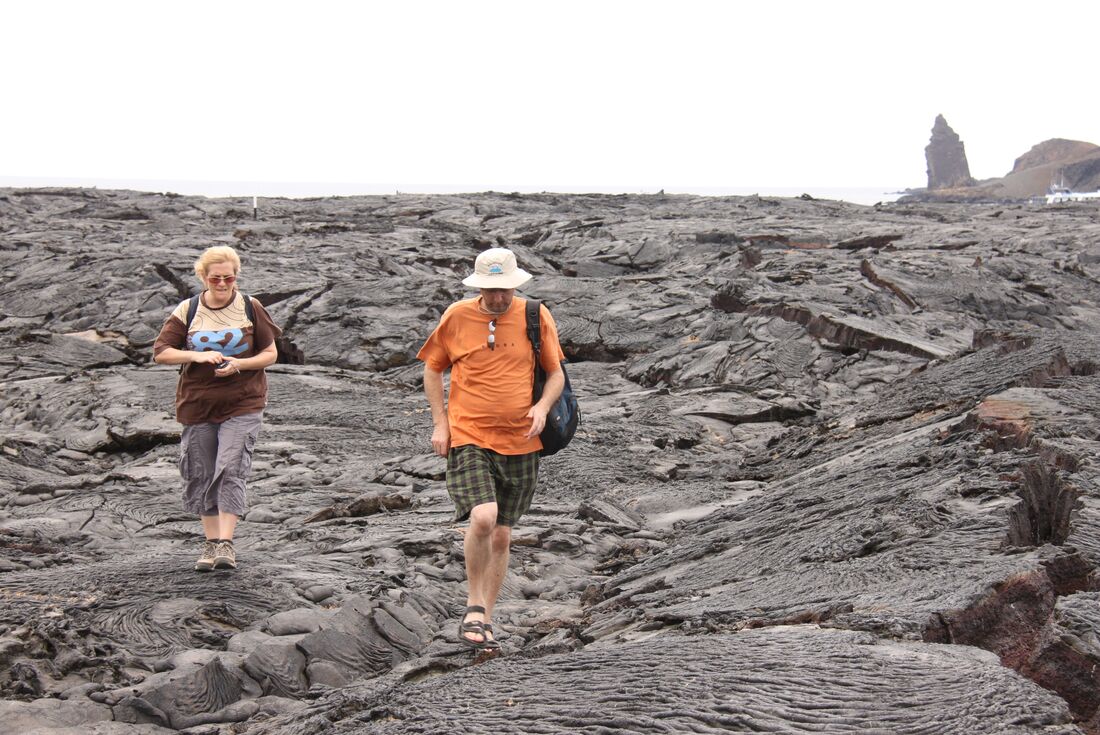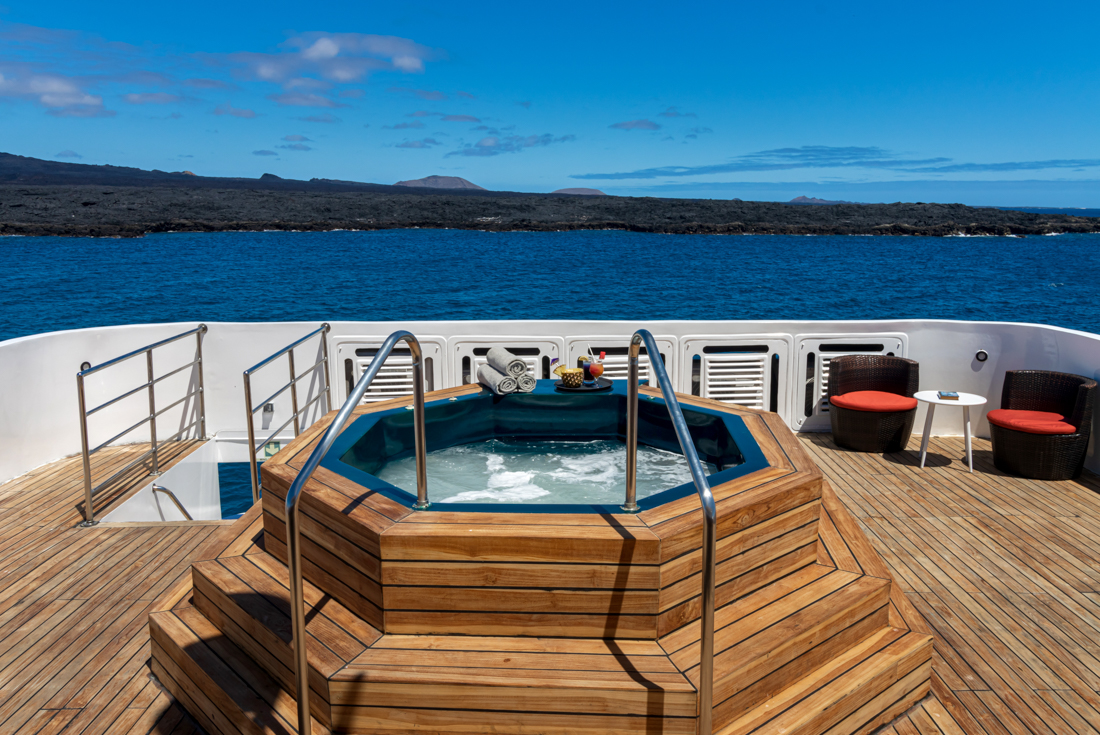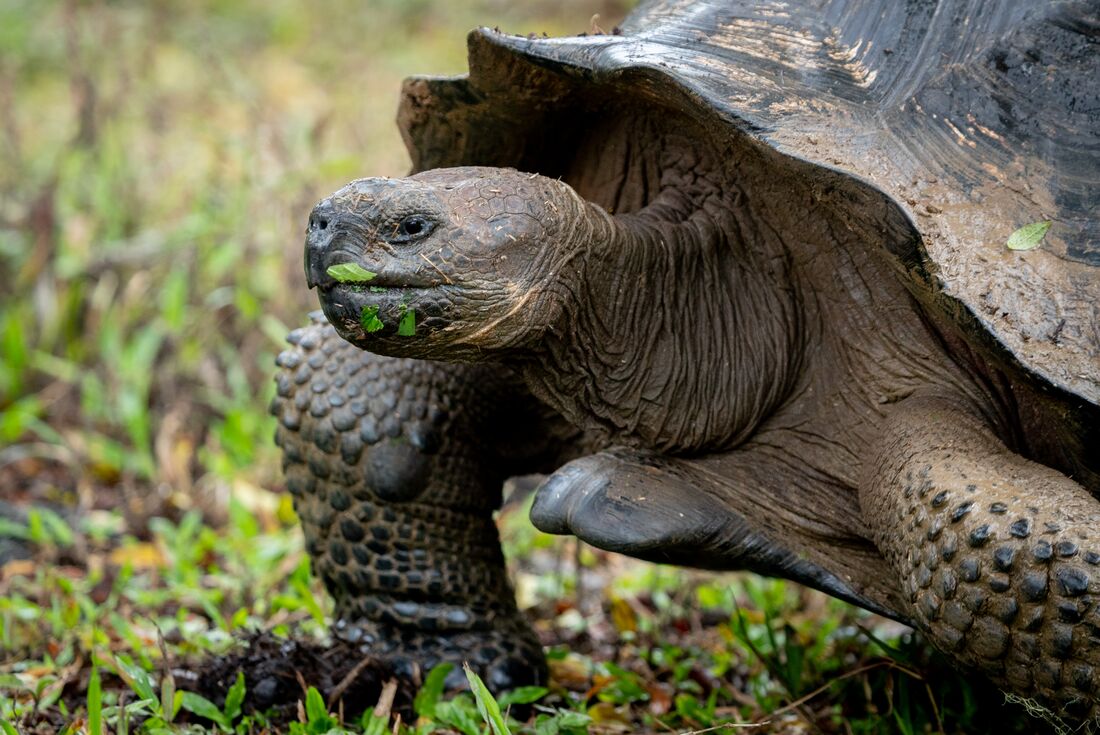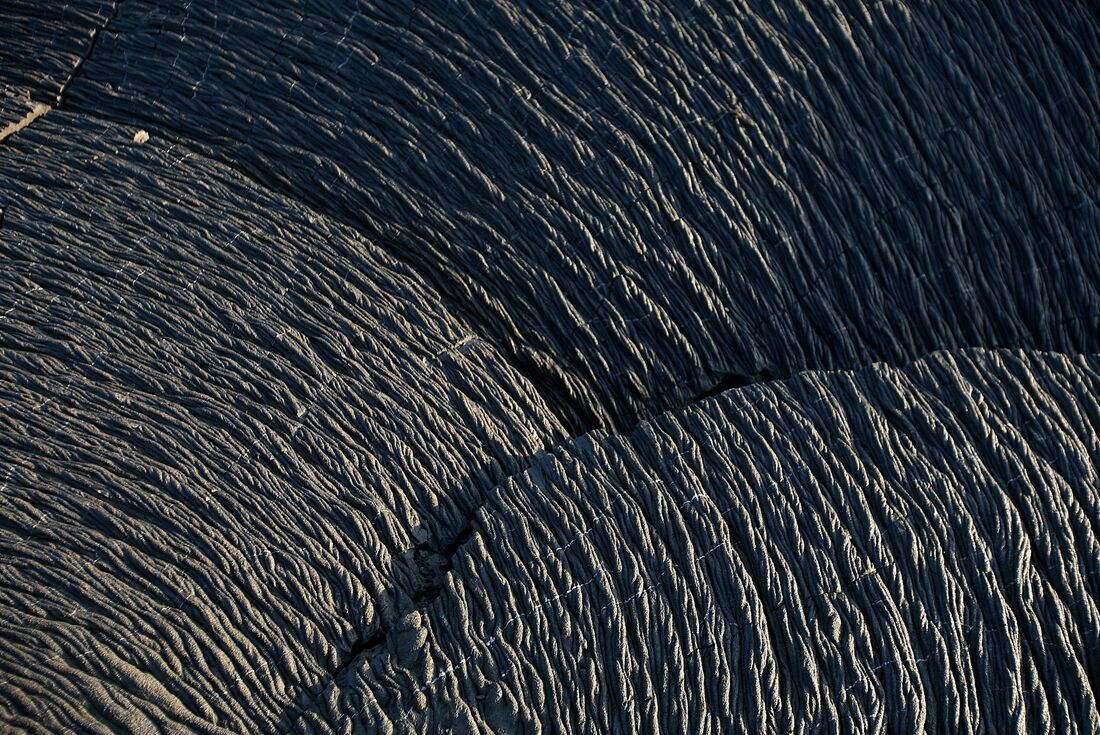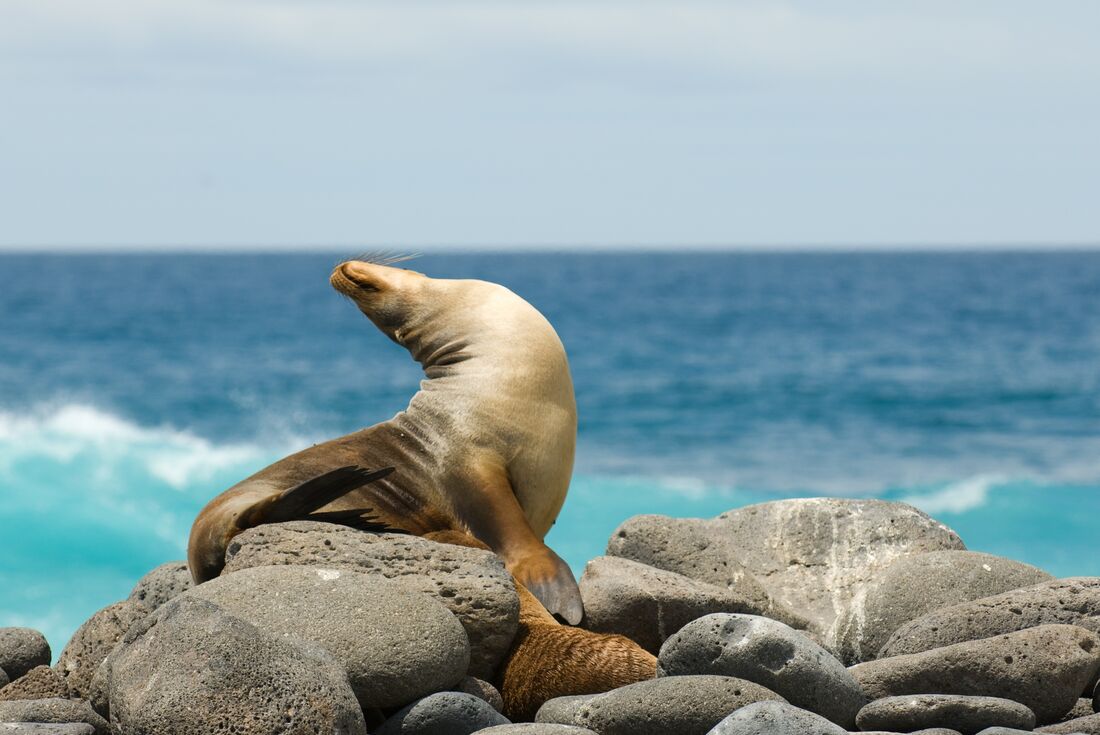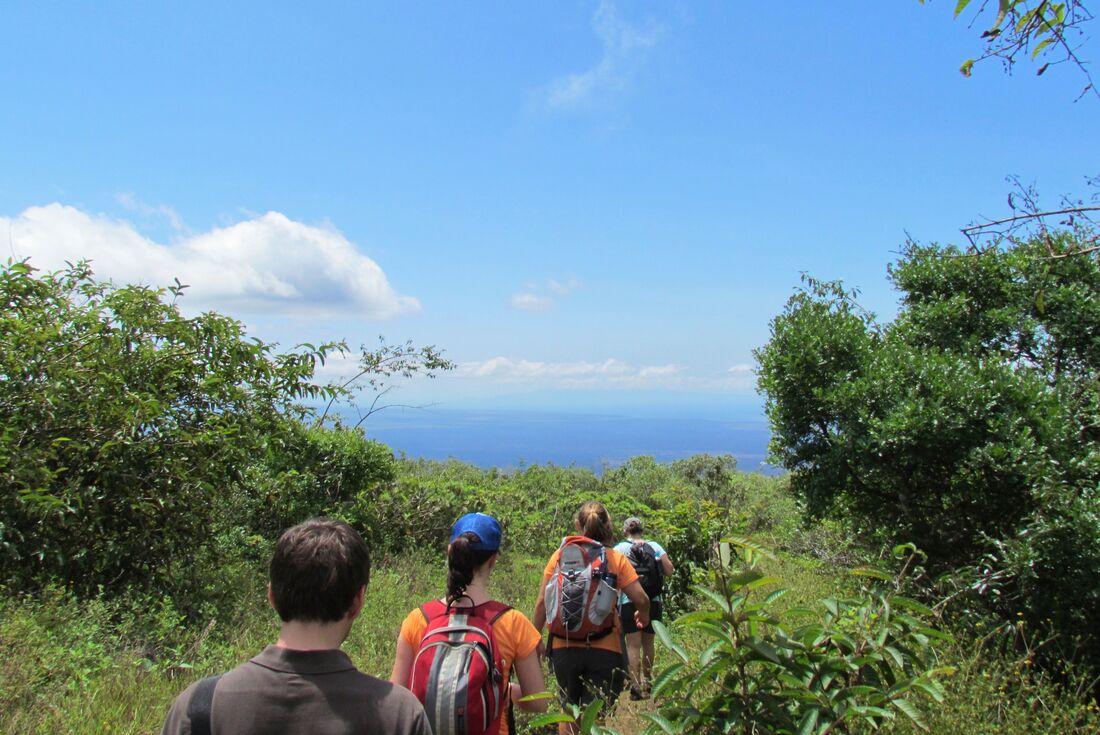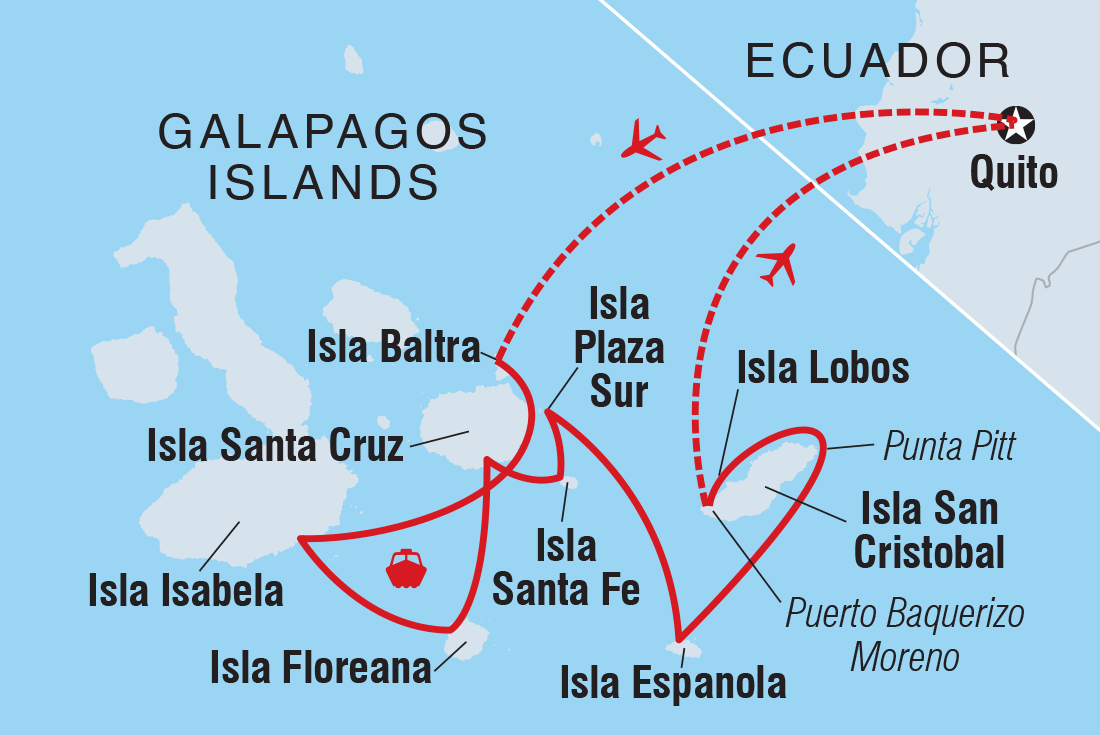SUMMARY
Experience the tranquil shores and unique wildlife of the Galapagos Islands as you drift across the Pacific Ocean on this 10-day sailing adventure. The beauty of these Ecuadorian isles is something to behold from aboard the M/Y Grand Queen Beatriz. Retrace the 180-year-old voyage of Charles Darwin by sea, witness the impressive giant tortoises and go birdwatching for blue-footed boobies and frigate birds on the shores. Each day, a new view will greet you out your cabin window, with a new adventure to embark on. As far as Galapagos adventures go, this trip is nothing but smooth sailing.
TOTAL DURATION : 10 Days
GROUP SIZE : MIN 1 MAX 16
TOUR ITINERARY AND DATES
START : Quito
END : Quito
COUNTRIES VISITED : Ecuador
Validity : 01 JAN 2022 To 31 DEC 2024
Day :1
Location : Quito
Welcome to Quito! On arrival at Quito's Mariscal Sucre International Airport, you will be met and transferred to your hotel. The remainder of the day will be at your leisure. A welcome meeting will be held in the evening at either 5 pm or 6 pm when you meet others travelling with you on your tour of the Galapagos Islands. After your welcome meeting, head out with your local leader and fellow travellers for a welcome dinner at a local restaurant. Try some traditional flavours and get to know you group as you settle into the coming adventure. Quito sits at high altitude under the towering Pichincha volcano. It is a beautiful city, arguably one of the most beautiful in South America. The city stretches along the valley and is surrounded by the Andes. The Old Town of Quito is awash with history, with more than 30 churches to explore, and a number of fascinating museums. La Compania de Jesus is considered to be the most beautiful and ornate churches in the Americas. The city's oldest street, Calle La Ronda, is well worth exploring.
Day :2
Location : Isla Baltra - Punta Carrion
This morning you will be transferred to the airport for your flight to the Galapagos Islands. Please note the pick-up time could be as early as 4.30 am (a boxed breakfast will be provided), as the airport is a one-hour drive away and you must allow for delays and check-in times. (Your tour leader will confirm this time with you at the welcome meeting). The flight to the Galapagos will make one stop in Guayaquil to pick up other passengers. (Total flight time is about 3.5 hours). On arrival in the Galapagos you will be met in the arrivals hall and then transferred to your vessel, M/Y Grand Queen Beatriz, anchored a short distance away on Isla Baltra. Once on board you’ll be assigned your cabins, meet the crew members and have a welcome briefing and safety drill, before getting to know your naturalist guide and fellow travellers over a delicious lunch. Your first stop in the afternoon will be Punta Carrion, located on the eastern side of the Itabaca channel that separates the islands of Baltra and Santa Cruz. This is a shallow and protected cove, ideal for your first snorkel and swim in the Galapagos. From the boat, wildlife is plentiful – keep your eyes peeled for occasional sightings of stunning blue-footed boobies, Galapagos herons, great blue herons and, underwater, swim among rays and white-tipped reef sharks. Tonight, enjoy a welcome cocktail and crew presentation on board. Estimated travel time/distance: Baltra to Punta Carrion: 1.5 hours (10 nautical miles) Punta Carrion to Isla Isabela (Puerto Villamil): 9 hours (64 nautical miles)
Day :3
Location : Isla Isabela - Las Tintoreras - Giant Tortoise Breeding Centre
Today, wake up on the south coast of Isla Isabela, the largest of the Galapagos Archipelago. Isabela was formed by five giant volcanic craters, all of which are still considered active. The island is located in one of the youngest geological areas in the world, having been formed less than 1 million years ago. This southern coast of turquoise blue waters has the largest area of beaches in the Galapagos. You will visit Las Tintoreras, where from the viewing walkway you can look down into this narrow channel to see a colony of white-tipped reef sharks swimming and sleeping, and the occasional playful sea lion among them. Blue-footed boobies and penguins, marine iguanas and crabs also make their home here. Enjoy a long walk on a path through aa (‘ah-ah’) lava flow and see plenty of marine iguanas. Locally, white sharks are known as 'tintoreras', hence the name of this spectacular site. In the afternoon, take a leisurely walk through one of Isabela’s coastal lagoons, where you might catch a glimpse of some flamingos. This mangrove-lined lagoon path leads to Isabela’s giant tortoise breeding centre (Arnoldo Tupiza), where you'll observe tortoises in all stages of development. Here you can see the five sub species of tortoises from Isabela Island, some of which are bred in captivity. You will then have the choice for optional swimming at the beach or decide to do some shopping in Puerto Villamil. Estimated travel time/distance: Isla Isabela (Puerto Villamil) to Post Office Bay: 6 hours (40 nautical miles)
Day :4
Location : Isla Floreana - Post Office Bay - Devil's Crown - Punta Cormorant.
Isla Floreana is a highlight of any Galapagos cruise, rich in natural wonders and a multitude of wildlife, both on land and in the waters surrounding the island. Enjoy a panga (Zodiac boat) ride to observe marine iguanas, sea lions and crabs before taking a leisurely walk to Post Office Bay, where 18th century whalers used a barrel as an unofficial mail drop. This custom continues to this day with visitors to the Galapagos – post one of your own or see if there are any you could deliver back home! You will also have the chance to go snorkelling with sea turtles. Today is also one of your best opportunities to see pink flamingos and other water birds wading in the lagoons, including pintails and stilts. Just offshore, the Devil’s Crown is an old eroded volcanic cone and a popular roosting site for seabirds such as boobies, pelicans and frigates. Red-billed tropicbirds can also be seen nesting in the rocky crevices. The centre of the cone is an outstanding snorkelling spot, perhaps the most remarkable in the entire archipelago, full of sea lions and colourful fish. It is an experience certainly not to be missed. You will go ashore at Punta Cormorant where the sand is made up of fine olivine crystals, a glassy volcanic mineral, giving the beach an olive-green colour. It is the best place to see Galapagos sea lions. Estimated travel time/distance: Post Office Bay to Punta Cormorant: 0.5 hours (3 nautical miles) Punta Cormorant to Puerto Ayora: 4 hours (32 nautical miles)
Day :5
Location : Isla Santa Cruz - Charles Darwin Station - Santa Cruz Highlands.
Today you will visit Isla Santa Cruz, the second largest island in the Galapagos. The small town of Puerto Ayora is the economic centre of the archipelago, and home to the Charles Darwin Research Station. As well as undertaking vital conservation work, the station also makes for interesting exploration and offers the best opportunities for close encounters with giant tortoises. You may also see baby tortoises and land iguanas. Afterwards, head up into the highlands for a total change of scenery. Beginning at the coast you'll travel across Santa Cruz through the agricultural region and into the misty forests, with the walk taking about 45 minutes. This is a lush humid zone containing miconia bushes, scalesia and inactive volcanic cones. Santa Cruz has more endemic plants than any of the other islands, and you are likely to see Galapagos giant tortoises in their natural habitat and perhaps even the bright red feathers of a vermillion flycatcher! Estimated travel time/distance: Puerto Ayora to the Highlands: 45 mins by bus Puerto Ayora to Isla Santa Fe: 2 hours (16 nautical miles)
Day :6
Location : Isla Santa Fe - Isla Plaza Sur
Isla Santa Fe is home to many sea lions and these ones are very eager for swimming partners! It’s a lovely place to take a dip, and offers a dense concentration of wildlife, housing many of the stars of the Galapagos in one relatively small area. Expect to see Galapagos hawks, land iguanas, a variety of finches, Galapagos mockingbirds, sea lions, marine turtles, frigate birds, Galapagos doves and lava lizards. It’s also a naturally beautiful island, with one of the most attractive coves in the archipelago, and the surrounding waters are ideal for snorkelling. There’s a trail that follows the coast into the opuntia forest, where you see Santa Fe's trees – the largest in the Galapagos. Hiking towards the cliffs on Santa Fe will lead you to a forest of prickly pear cactus, also known as opuntia. A member of the cactus family, their name comes from the pear-shaped fruit the plant produces. Onto Isla Plaza Sur: a small island with great beauty, where you will get close to sea lions and walk past one of the Galapagos’ largest land iguana populations. Plaza Sur is also known for cacti and volcanic landscapes coloured bright red and green by sesuvium. The island’s rugged southern cliffs are an excellent place to spot tropicbirds and swallow-tailed gulls, as well as the 'Gentlemen’s Club’: a gathering of male sea lions either too young or too old to be beachmasters! Estimated travel time/distance: Isla Santa Fe to Isla Plaza Sur: 2 hours (16 nautical miles) Isla Plaza Sur to Isla Espanola (Punta Suarez): 7 hours (60 nautical miles)
Day :7
Location : Isla Espanola - Bahia Gardner - Punta Suarez
After an overnight sail you will wake up near Isla Espanola – the southernmost island of the Galapagos (and one of the most spectacular). Because of its remote location, this island has a large population of endemic fauna. It is the breeding site for nearly all of the world's 12,000 pairs of waved albatrosses and also home to colonies of blue-footed and Nazca boobies. Trails from the golden beaches, where sea lions and marine iguanas bathe, will lead you right through the middle of booby colonies, Galapagos doves and mockingbirds. You will also pay a visit to Punta Suarez, home to a large and varied wildlife population. A walk along its trails will take you to a cliff top viewpoint, where you'll gain a scenic view of the island. Boobies line the rocky shoreline beneath you, while frigate birds may be seen overhead, and nearby male sea lions can be seen lounging around. Albatross use the cliffs as their ‘runway’, helping become airborne by the southeast winds that blow across this part of the island. If you’re lucky, you’ll see the elaborate courtship rituals performed by albatross before the female chooses her lifelong mate. Stop at Bahia Gardner (Gardner Bay), considered by many as one of the most beautiful beaches in the Galapagos Islands, full of sea lions and hood mockingbirds. Walk along the pristine white sands or take another opportunity to swim with sea lion pups and lots of fish. The rocks off the coast provide an excellent spot to snorkel, with their abundance of reef sharks, turtles and many species of tropical fish, including surgeon and angelfish. The small white-tipped reef sharks are also often spotted resting under the rocks. Estimated travel time/distance: Punta Suarez to Bahia Gardner: 1 hour (7 nautical miles) Bahia Gardner to Isla San Cristobal (Punta Pitt): 7 hours (50 nautical miles)
Day :8
Location : Isla San Cristobal - Leon Dormido - Isla Lobos - Punta Pitt
This morning you will visit Punta Pitt on the eastern end of Isla San Cristobal. Walk to the top of the volcanic hill for views of the sparsely vegetated island. A variety of seabirds nest here, including blue-footed boobies and frigates. You will then navigate close by Leon Dormido (Kicker Rock) the basalt remains of a crater in the middle of the sea, with the shape resembling a sleeping lion. The rock rises 150 meters above the surface and is divided into two parts by a narrow channel. Although there are no landing areas, you will circumnavigation the Rock where you will see tropic birds, marine iguanas in the water and many sea lions. You will also visit Isla Lobos, a tiny island almost touching San Cristobal. This is the perfect time to see the always friendly sea lions as they play in the calm shallow waters here. There are also blue-footed boobies, frigate birds and marine iguanas around the island. Estimated travel time/distance: Punta Pitt to Kicker Rock (San Cristobal): 2.5 hours (27 nautical miles) Kicker Rock to Isla Lobos: 1 hour (7 nautical miles) Isla Lobos to Puerto Baquerizo (San Cristobal): 1 hour (5 nautical miles)
Day :9
Location : Fly from San Cristobal to Quito.
As flights to the mainland from Galapagos depart mid-morning, it is an early start for the last morning on the islands. Depending on the time of the flight, time spent on this final excursion could be limited. Visit San Cristobal Interpretation Center in the morning. This centre brings the history and geography of the archipelago to life, from its volcanic origins to the present day. The human history exhibit offers an insight into the discovery and colonisation of the Galapagos, and the reality of the problems the islands face today. This is a great way to complete your time in the Galapagos. This will be your final excursion before you head to the airport in San Cristobal for your flight back to Quito. Upon arrival in Quito Airport you are transferred back to our hotel for an overnight stay.
Day :10
Location : Quito
After breakfast, there are no activities planned, so you are able to depart the accommodation at any time. There are many fascinating things to do in and around Quito, and perhaps an Urban Adventures tour may take your fancy. Explore Ecuadorian food culture and taste traditional ingredients on the Quito Market Discovery Tour, where you’ll visit an authentic market and ride a cable car to the top of Pichincha to view the expansive city (see urbanadventures.com/destination/Quito-tours).
Reference : IT

